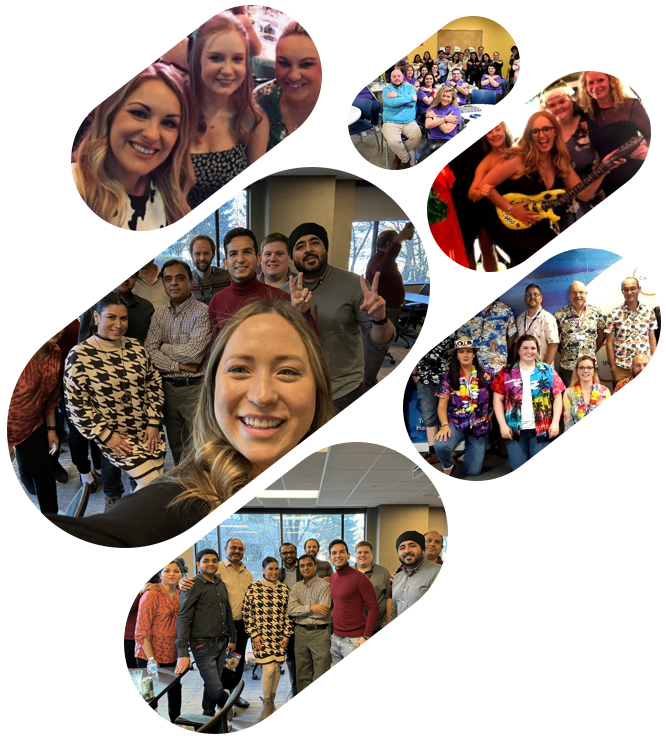
In today’s digital-first world, job hunting has moved far beyond newspaper listings and physical resumes. Platforms like LinkedIn have completely transformed how professionals connect with employers, showcase their skills, and explore career opportunities.
Whether you’re a fresh graduate searching for your first work experience, a professional considering a career change, or someone aiming for high-paying jobs in the UK, LinkedIn offers one of the most effective job search ecosystems.
However, having a LinkedIn account is not enough. To make the platform work for you, you need to understand how to use LinkedIn strategically to secure a job. From optimising your profile to mastering job search filters and networking effectively, there are several ways to increase your visibility to recruiters.
In this blog, we’ll take a comprehensive look at how to get a job through LinkedIn, step by step.
Why LinkedIn for Job Search?
Before diving into tactics, let’s answer the obvious question: How important is LinkedIn to getting a job? LinkedIn is not just a professional networking site; it’s a global talent marketplace where opportunities are matched with skillsets.
Over 60 million people use LinkedIn to search for jobs every week, and employers post millions of job openings each month. Recruiters rely heavily on LinkedIn profiles to evaluate candidates even before interviews.
So, if you want to find a job through LinkedIn, here’s why it’s the best place to start.

Vast Network
LinkedIn boasts a vast network, encompassing everything from entry-level job seekers to CEOs. This extensive community provides you with both direct and indirect access to professionals in your industry. The platform allows you to connect with hiring managers, recruiters, and even potential colleagues. This makes networking more authentic and gives you an edge when trying to secure a job through LinkedIn.
Advanced Search Filters
When wondering how to find a job via LinkedIn, the answer often lies in its advanced filters. Unlike standard job sites, LinkedIn lets you refine searches by:
- Job title
- Industry
- Location
- Experience level
- Company size
- Hybrid or remote roles
This makes it easier to discover positions that truly match your preferences. Whether you’re looking for call centre jobs, IT roles, or niche opportunities in finance or healthcare, LinkedIn’s smart filters cut through the clutter.

Networking Opportunities
LinkedIn doubles as both a job search platform and a professional networking hub. You can join industry groups, follow companies, comment on posts, and send direct messages to professionals. This explains how to network on LinkedIn to secure a job more effectively than cold emailing strangers.
How to Use LinkedIn Like a Pro Job Seeker
Now that we know how does LinkedIn help you find a job, let’s look at how to leverage the platform effectively.
Optimise Your LinkedIn Profile for Job Search
Your LinkedIn profile is your digital resume, and the first impression a recruiter has of you. If you’re wondering how to get hired through LinkedIn, start by making your profile recruiter-ready.
- Profile Picture and Headline
Your photo should be professional yet approachable. Think of it as the equivalent of your first handshake. Alongside, your headline (the line under your name) should be keyword-rich and specific. For example: Marketing Analyst | Skilled in SEO, Content Strategy & Data Analytics.
- Detailed Summary
Your summary is where you tell recruiters who you are, what you bring to the table, and what you’re looking for. Keep it conversational but professional. Include industry-specific keywords to boost visibility.

- Work Experience
List your roles, responsibilities, and achievements. Instead of writing “Responsible for sales,” write “Increased sales revenue by 30% in 6 months.” Recruiters value results-driven achievements.
- Skills and Endorsements
Add relevant skills that reflect your profession. For example, if you’re applying for customer service roles, highlight skills like “Communication,” “Problem-Solving,” and “Customer Experience Management.” Ask colleagues or peers to endorse these skills to increase credibility.
Using LinkedIn’s Job Search Functionality
Once your profile is optimized, the next step is mastering LinkedIn’s job search tools. Here is a step-by-step guide.
Step 1: Access the Job Search Feature
On your LinkedIn dashboard, click the “Jobs” tab at the top. This will take you to a dedicated job search page where you can enter keywords, job titles, or company names.
Step 2: Refine Your Job Search with Filters
Use advanced filters to narrow down results. For example, if you want to find a job through LinkedIn in Delhi, you can filter by location. Looking for high-paying jobs in the UK? You can filter by salary range and country.
Step 3: Save Your Searches and Set Job Alerts
Instead of repeating searches every day, save them. LinkedIn lets you set job alerts so that new opportunities that match your criteria are emailed directly to you. This ensures you’re among the first applicants—a considerable advantage.
Leveraging LinkedIn’s “Easy Apply” Feature
One of the best ways to answer how to get a job through LinkedIn is by using the Easy Apply button. This feature allows you to apply directly with your LinkedIn profile, skipping lengthy application forms. However, don’t rely solely on it, customising your CV for essential roles can still give you an edge.
Networking for Job Opportunities
When people ask, How do I use LinkedIn to find a job, networking is often the missing piece. Build meaningful connections by:
- Sending personalized connection requests.
- Engaging with industry-related posts.
- Joining groups relevant to your career interests.
- Reaching out to recruiters directly with a polite introduction.
For instance, if you’re exploring career change tips, you can network with professionals who’ve successfully transitioned and learn from their journey.
Researching Companies and Job Listings
Before applying, always research the company. LinkedIn allows you to follow company pages, view their updates, and see employee testimonials. This gives you a realistic idea of workplace culture and whether it aligns with your goals.
Prepare for Interviews
LinkedIn can even help you prepare for interviews. Some job postings include sample interview questions, and you can also view employees’ career paths to understand growth opportunities. Additionally, engaging with company posts can give you insights to impress interviewers.
Conclusion
So, how do you use LinkedIn to find a job? By strategically optimising your profile, using advanced search tools, networking meaningfully, and staying active on the platform. LinkedIn is not just about submitting applications, it’s about creating opportunities through visibility and connections.
Whether you’re looking at how does LinkedIn help you find a job in your city, aiming for high-paying jobs in the UK, or seeking career change tips, LinkedIn is a powerful ally. With the right approach, it can open doors to industries ranging from IT to call centre jobs and everything in between.
At HGS UK, we recognise the power of platforms like LinkedIn in transforming career journeys and helping professionals connect with the right opportunities.
Frequently Asked Questions (FAQs)
How do I let recruiters know I’m job hunting on LinkedIn?
You can turn on the “Open to Work” feature in your profile settings. LinkedIn allows you to specify job preferences and locations. Recruiters using LinkedIn Recruiter can then easily find you.
How do endorsements and recommendations impact my job search?
Endorsements validate your listed skills, while recommendations (written testimonials from colleagues) carry significant weight. Both increase recruiter confidence in your profile.
How often should I update my LinkedIn profile during a job search?
Update whenever you acquire new skills, certifications, or responsibilities. Frequent activity signals recruiters that you’re active and serious about opportunities.
What’s the best time to search or apply for jobs on LinkedIn?
Studies suggest Tuesday mornings are ideal, but consistency is more important. Apply as soon as jobs are posted to increase your chances of being noticed.
 UK
UK Canada
Canada Colombia
Colombia India
India Jamaica
Jamaica Philippines
Philippines US
US SA
SA
